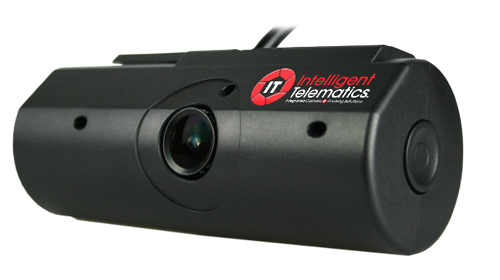
Your IoT project is about more than just technology
Here’s a bold statement for you: if you want to know what the future of all IT projects looks like, take a look at how the Internet of Things is playing out.
This post accompanies a podcast. Listen to the full recording here.
Welcome to the new model for IT
In case you didn’t know, the “internet of things” encompasses a whole world of solutions, from digital signage in your local supermarket to pressure monitoring in industrial gas tanks.

Did you know? All cities become smart cities if you take a photo of them at night with light trails. Simple.
If these solutions have anything in common, it’s that they’re all distinct from “traditional” IT. IoT is on the front lines, embedded in business functions: in the store, in the lorry, in the oil rig and the electricity grid.
In tomorrow’s digital business, all technology will be deeply embedded into the workplace and the business process like this, as more mobility, more applications, and more data analytics is put in the hands of employees and customers.
So, as an industry we’d better learn how to make this technology model work, hadn’t we?
Room for improvement
Is IoT working today? Not as well as it could.
Research announced at this year’s IoT World Forum exposed some sobering realities:
- Only 26% of IoT projects have succeeded (although that doesn’t mean the rest have absolutely failed, mind).
- 62% say it’s been harder than they thought getting their projects to production.
- 61% say they’re only scratching the surface of what IoT can do.
Why? Old IT project favourites like time-to-completion and budget overruns feature, but also fundamental challenges related to lack of expertise in-house and integrating IoT into the rest of the business.

What’s the answer?
The best practices for success aren’t rocket science. But they bear repeating:
- Start small to get business buy-in. IoT projects are almost always much harder and more complicated than you might expect them to be. Pick a tightly defined use case where you can deliver results and prove to the CFO why you deserve more budget.
- See the project as part of process transformation. If you’re dabbling in IoT just to try out the tech, you’re going to fail. Deeply understand how your business works and look for new ways of running an inefficient process, or even a whole business model. Your project team must involve multiple departments.
- Find the right partners. Look at the smart city: it’s an ecosystem of public and private sector organisations working together to make solutions like smart parking work effectively. If you don’t already have connections outside of your sector, you need to figure out how to build those relationships if you’re to make the most interesting applications of IoT work.
- Get the right talent. IoT solutions are technically complex and very different to traditional IT infrastructure in some important ways. A better way to think of IoT is that it’s closer to “OT”, or operational technology. You need specialist skills in your sector’s operational technology, as well as in security, data analysis, radio optimisation and business process engineering. The reality is, you may have to turn to a vendor to fill these gaps throughout your project lifecycle.
- Focus on change management. A great system is worthless unless the staff — drivers, engineers, managers — know how to use it, understand the data it produces, and are motivated to change how they work. Many workers will feel threatened by IoT taking their jobs… show them how it can make their lives easier.
A success story: Intelligent Telematics
To show these best practices in action, we spoke to Sam Footer of Intelligent Telematics, a Cisco partner. Intelligent Telematics installs 3G-connected cameras inside the cab of commercial fleet vehicles, like taxis, buses and delivery vans.

It’s a dashcam. On steroids. Image courtesy of Intelligent Telematics.
Sam told us that when he’s talking to customers, he’s not talking to the IT team until much later on in the buying process: it’s risk officers, compliance teams, even HR people that he’s chatting to. That’s because the IoT solution he’s talking about is very much a business solution, not a technology purchase.
Intelligent Telematics has spotted and solved a clear business problem: fleet vehicles are often involved in accidents. Being able to prove no-fault liability can save companies money in insurance claims, and protect their brand. And having a camera in the cab can also help firms train, monitor and reward their drivers for driving safely.

Yep, that’s a bicycle in front of a taxi. Pro tip: both wheels are supposed to be on the ground. Image courtesy of Intelligent Telematics
This is not a large-scale fleet-management solution: Intelligent Telematics has carefully scoped its offer around these clear problems. So it’s not designed for route planning, working-time directive compliance, or anything else.
Sam explained that his customers can use the collected footage in many different ways: in very small fleets, the MD of the firm might check in on the web portal manually; in larger fleets, automated alerts might be set up with alarms being investigated by an outsourced call centre. In other words, the solution adapts to fit the company’s specific needs and business processes.
To build the solution, Intelligent Telematics works with service providers for connectivity and with Cisco Jasper as a management platform. This ecosystem approach means Intelligent Telematics can scale quickly and stick to what it does best: understanding its customers.
And that often means helping out with change management. Sam told us that not only are there complexities around just deploying the solution — how can you install cameras in 500 vehicles all over the country without disrupting productivity? — but around cultural factors, like helping drivers to understand that having a camera in cab can help back them up when they’re involved in an accident; it’s not “Big Brother”.
Dive in to the world of IoT
Check out our IoT podcast to learn more about the world of IoT and approaches you can take to make your projects a success. Listen to the podcast and subscribe here.
To find out more about the potential of IoT and how Cisco can get you there faster, check out our IoT solutions and services.
Tags:


